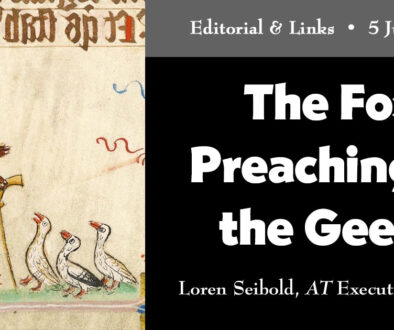A Multigenerational Black Experience on Film
by Dawnette Chambers & Christopher C. Thompson | 18 February 2020 |
Do you ever think about your legacy? What do you plan to leave for your family, and how will you be remembered? Most people want the opportunity to share their life’s work, their passions and insight, with the next generation. However, many young black Americans feel their experience here and now quashes expectations for a hopeful future.
A film that has captured some of that concern is Queen and Slim, directed by Melina Matsoukas and written by Lena Waite and James Frey. Queen and Slim is a frame through which we might see various elements of the black experience, and how they affect us.
In Queen and Slim one sees the black experience allegorically, through a story set in the present day that seems like it could be from 1973. The concept is that these same issues still challenge the 21st century viewer. The visuals and cinematography style helps to tell the story of the African experience in America. The backdrop is police brutality and the looming prison industrial complex. In particular, it deals with classism and caste in the black community and how each class functions within the struggle. The overarching lesson is that the black collective and its allies must find solutions to the crises that plague black people, and create safe, thriving and loving communities to forge ahead into a preferred future for generations to come.
Fear
The film starts with a traffic stop that goes terribly wrong. Queen and Slim run, their primary motivation being fear that they will not receive a fair hearing and due process. The moment the lights flash behind them, every black viewer in the theater has a sense of apprehension, given the long history of police violence and abuse of power in minority communities. Only white people are relieved to see the police. The black experience is marked by fear of the criminal justice system—indeed, of the law of the land and what it does to black bodies. Queen and Slim are on the run because “the law” is designed to diminish, dehumanize and destroy them.
Oppressive practices on the part of the justice system also stem from fear—the ignorant fear of what people perceive as a threat. Jody Armour writes about this concept extensively in his book Negrophobia, as does Cornel Belcher in Black Man in the White House.
Family
At the moment Queen and Slim wrestle with the choice to run, Slim hesitates because he wants to call his dad and connect with his family. When that option is denied him, he is distraught. He makes it clear on several occasions that he draws meaning and identity from his intimate family relationships. Eventually Slim violates the fugitive code and calls his family. Slim’s middle-aged father is proud that he has raised his son to be aware—but has nothing but superficial praise and mediocre support to offer the fugitives.
It’s the family relationships and those who align themselves as family that provide the necessary support to keep Queen and Slim alive and safe. Queen, on the other hand, is haunted by the trauma of her family of origin, which is in part what has made her aloof and self-absorbed. Whether they are positive or negative, Queen and Slim reminds us that navigating the wider social experience stems from our closest and immediate family relationships.
Throughout the film we see how different generations of black people feel about Queen and Slim’s journey to freedom. One young man, Junior, is enamored with the couple’s presence at his dad’s mechanic shop because he believes in their cause. He thinks that if “they don’t make it,” then they will be immortal (in memory).
The mechanic (Junior’s dad) seems careless about the couple’s desire for freedom, or his son’s rejection of his conservative ideals. He believes they are wrong for “defending” themselves in Ohio. Instead of support, all they get from him is sermonizing. Yet, on the other hand, Slim still reveres his father and draws comfort and support from him, despite their distance.
Coalition-Building
The film presents a sort of reverse Underground Railroad. Instead of heading north, Queen and Slim head south, intending to go to Cuba—a country that is itself uncooperative and resistant to American control. They are helped by people of various races to escape to freedom.
Here the film is a meaningful complement to recent conversations about the Underground Railroad in media like the 2019 film Harriet and Ta-Nehisi Coates’ The Water Dancer, which recall the Underground Railroad as a sophisticated system of resistance and liberation. The film suggests that the black community must cultivate revamped systems to serve the same purpose as the Underground Railroad.
From Uncle Earl to the snitch, we are visually made aware of the adage, “Everyone your color, ain’t your kind.” Queen and Slim cannot assume that everyone they encounter is willing to support their journey to freedom. Capitalistic ideals, the underground economy and socioeconomic stratification raise the stakes, and hinder our ability to coalesce for meaningful change.
Queen is the only black professional in the story. She is proud of her education and her achievement. Early on in the film Slim questions why she (and black people collectively) “always gotta to be excellent at something.” Education provides the means by which people are able to give back to their communities and ensure a preferred future. Without an emphasis on the value of education, our communities will continue to vacillate.
Church
The cross is a consistent visual theme in the film. It represents an acknowledgment of God’s grace. There are crosses throughout the film: around Slim’s neck, Uncle Earl’s car, the wall in Uncle Earl’s house. Slim listens to gospel music right after the traumatic moment, and exhibits a faith-oriented worldview. Though Queen initially rejects these ideas, the story reveals her acceptance and willingness to adopt them.
One of the closing frames of the film includes a church scene that is intended to depict a sort of “heroes’ welcome” type funeral. The message is that the church and faith remains the foundation of the most meaningful movements. It is to be noted that the church has been and will always be the source of some of the best and most meaningful forms of activism and resistance. We would do well to leverage its power.
In conclusion, the question posed at the outset of this piece still stands as a challenge to us all. What do you want your legacy to be? Black America needs a comprehensive economic development plan to create generational wealth for the future. Unfortunately, without significant changes, there will be no real inclusion for blacks in America. May God empower us to be allies in love, empowerment, advocacy and liberation for those who are the most vulnerable, until He comes.

Dawnette Chambers serves as an assistant professor of communication and public relations program coordinator at her alma mater, Oakwood University.
 Christopher C. Thompson works in Huntsville, AL for the Breath of Life broadcast and ministry. He and his wife Tracy have one son, Christopher II.
Christopher C. Thompson works in Huntsville, AL for the Breath of Life broadcast and ministry. He and his wife Tracy have one son, Christopher II.




